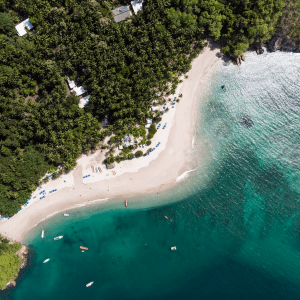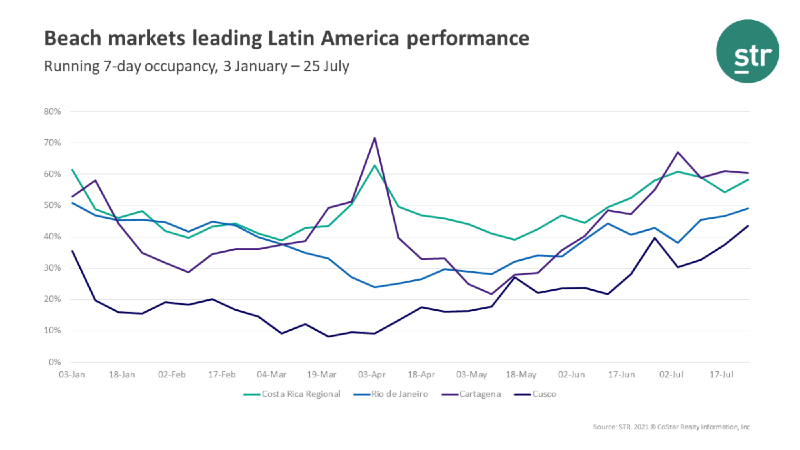 Latin America’s popular leisure markets, especially beach destinations, have continued to post hotel occupancy levels above 40%, according to data from STR through 25 July.
Latin America’s popular leisure markets, especially beach destinations, have continued to post hotel occupancy levels above 40%, according to data from STR through 25 July.
As demand remains predominantly domestic leisure-driven, markets reliant on that segment are leading hotel performance in the region. During 19-25 July, Cartagena posted the region’s highest occupancy at 60.4%. The market’s weekly occupancy reached as high as 71.6% in 2021 (week ending 4 April). Among other STR-defined markets, Costa Rica Regional came in second during the week ending 25 July, at 58.2%, while Rio de Janeiro experienced an occupancy level of 49.1%, the lowest in this group of beach destinations.
“Boosted by pent-up domestic demand, Latin America’s beach destinations have been key to the region’s recovery as restrictions remain around international travel,” said Patricia Boo, STR’s area director, Central & South America. “Like other regions of the world, domestic travelers are less attracted to the busy, urban cities and prefer the wide open, outdoor spaces as well as the warm weather and surroundings that these markets offer. Historically, these destinations have been popular on the international tourism trail, but we are likely years away from getting back to normal levels of international demand.”
For comparison, Cusco, the entrance to Machu Pichu and another important international destination, has reported occupancy below 50%. During 19-25 July, the market’s hotel occupancy came in at 43.5%, the highest weekly occupancy in the Cusco during 2021.

Among Latin America’s urban markets, Santiago was the most recent week’s occupancy standout at 54.0%. São Paulo and San Jose surpassed the 35% level, at 37.8% and 36.7%, respectively.
On the other side of the spectrum, Buenos Aires continues to see occupancy levels below 30%. For the week ending 25 July, the market posted a 21.1% occupancy level, which was its highest since the week ending 21 March.
“While the general reasoning that leisure travelers prefer rural destinations still holds, this year especially we’re feeling the loss of business and group demand,” Boo said. “In 2020, there was some degree of essential demand that filled urban hotels—key workers, healthcare providers, and other hotel guests traveling out of necessity. This year, pandemic-based demand has fallen considerably, but business and groups have not yet picked back up to significant levels.”



















